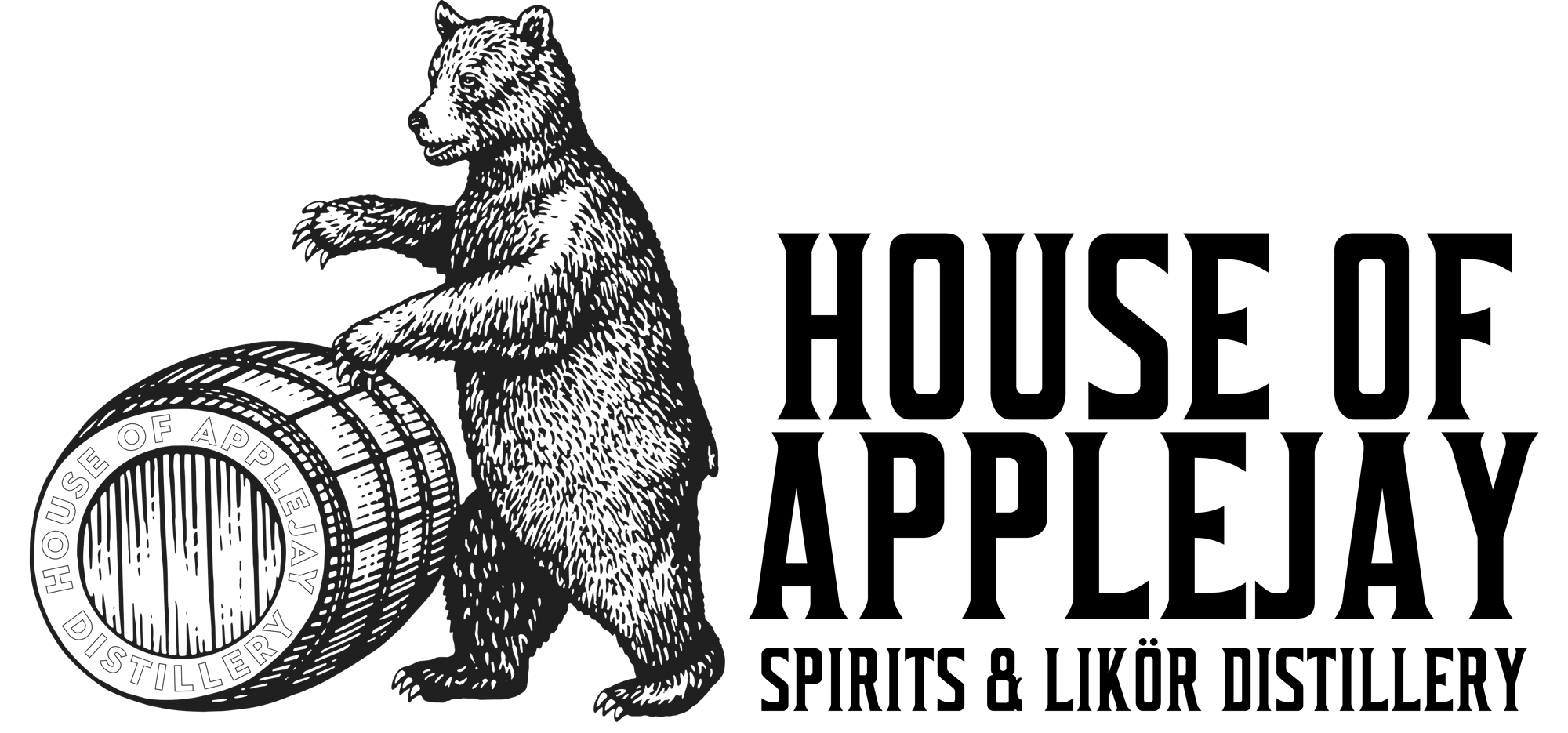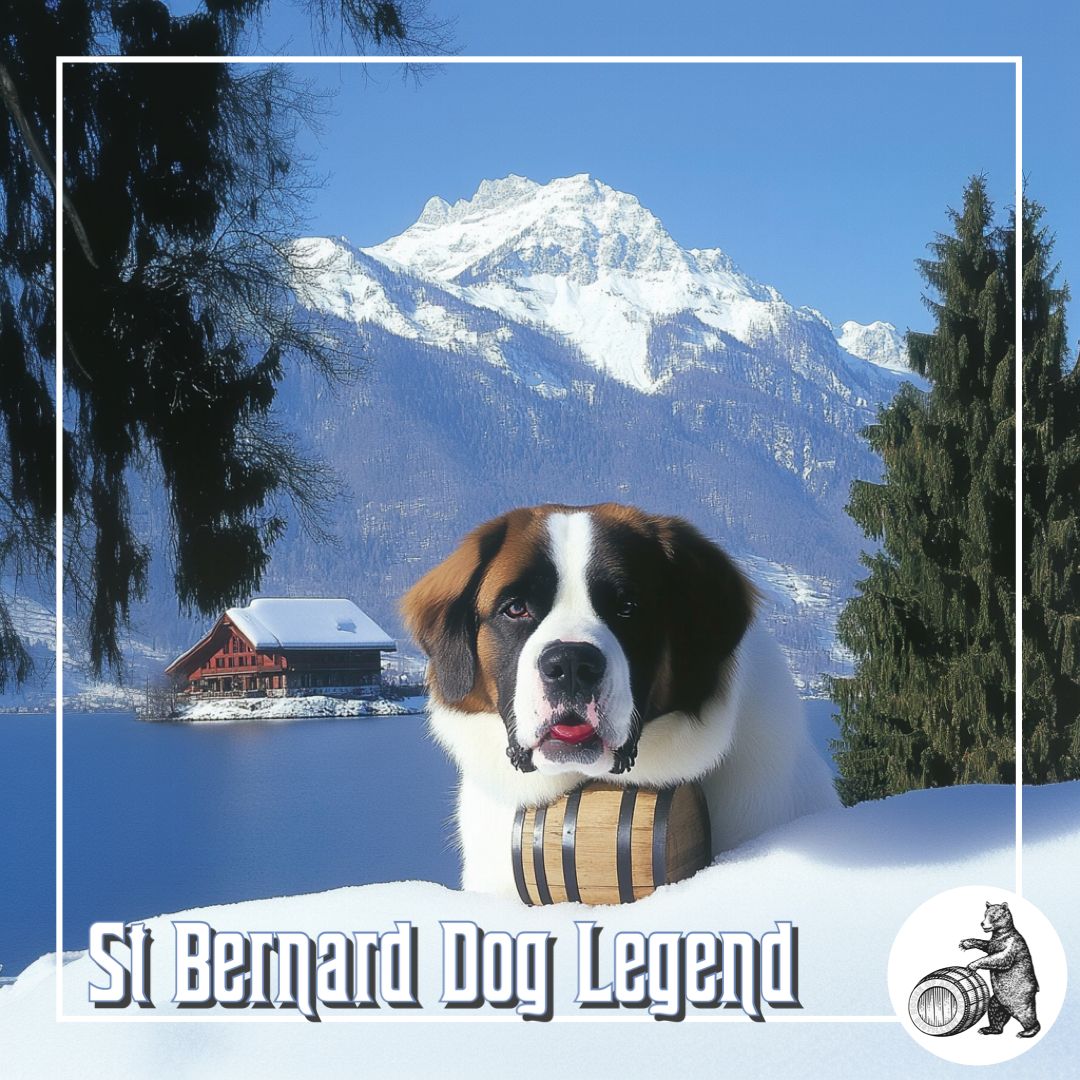The Saint Bernard Dog and Brandy
Saint Bernard Rescue Dogs and Their Brandy Barrels
The image of a Saint Bernard rescue dog bounding through the snowy Alps with a small barrel of brandy tied around its neck is one of the most iconic and enduring legends in history. This tale, however, is rooted more in 19th-century artistic imagination than in historical fact. By delving into the history of these heroic dogs, their legendary barrels, and the artists who immortalized them, we uncover a story that blends real-life heroics with creative embellishment—and a fascinating connection to Alpine brandy production.
Saint Bernards and the Great St. Bernard Pass
The origins of the Saint Bernard breed can be traced back to the late 17th century, but their association with Alpine rescue work began earlier. In 1050, Bernard of Menthon, later canonized as Saint Bernard, founded the Great St. Bernard Hospice. Situated at an elevation of over 8,000 feet, this monastery provided refuge to travelers braving the treacherous Great St. Bernard Pass, a critical route between Switzerland and Italy.
By the late 1600s, monks at the hospice began breeding large, sturdy dogs to assist in rescue missions. These dogs, precursors to the modern Saint Bernard, were ideal for navigating the snowy terrain and locating stranded travelers. By the 18th century, their reputation for bravery and loyalty had spread, and tales of their life-saving efforts became widely known.
The Birth of the Barrel Myth
The myth of Saint Bernards carrying small barrels of brandy emerged in the early 19th century, thanks in large part to the English painter Edwin Landseer (1802–1873). In 1820, Landseer created his famous painting Alpine Mastiffs Reanimating a Distressed Traveler. The work depicted two Saint Bernards rescuing a fallen traveler in a snowy mountain setting. One of the dogs is shown with a small wooden barrel tied around its neck, a detail that captured the public’s imagination.
While Landseer’s painting is based on artistic license rather than historical fact, the image resonated deeply. Prints of the painting circulated widely, and the barrel became an enduring symbol of Alpine rescue. Landseer’s work is credited with popularizing the romanticized vision of Saint Bernards as brandy-carrying heroes, a myth that persists to this day.
The Historical Appeal of Brandy and Its Alpine Connection
The choice of brandy as the supposed content of the barrel is not coincidental. For centuries, brandy was celebrated for its restorative and warming properties, especially in cold climates. The warming flush caused by alcohol made it a natural candidate for combating the effects of hypothermia and exhaustion, though it paradoxically promotes heat loss rather than retention.
This connection gains additional significance in the context of Alpine culture. The Alpine region has a long history of brandy production, particularly eaux-de-vie, a type of distilled fruit brandy. Local farmers and distillers in the Swiss and Italian Alps would produce brandy from surplus fruits such as cherries, plums, and pears. These spirits, often considered a source of warmth and comfort during the harsh winters, became deeply ingrained in Alpine life and hospitality.
The monks of the Great St. Bernard Hospice were known to use local resources to sustain their work, which might have included producing or storing brandy. Although there is no direct evidence that the monks used brandy in rescue missions, its presence in the region adds a layer of authenticity to the legend. The idea of carrying a small barrel of locally produced brandy to revive travelers likely appealed to 19th-century audiences familiar with the Alpine distillation tradition.
Real-Life Heroics of Saint Bernards
Although the barrel myth is fictional, the bravery and skill of the Saint Bernard dogs are indisputable. These animals were trained by the monks to locate lost travelers buried in snow. They worked in pairs or teams, with one dog staying beside the stranded person to provide warmth while the other returned to the hospice to alert the monks. This strategy saved countless lives over the centuries.
One of the most famous Saint Bernards was Barry (1800–1814), who lived at the hospice and became a legend in his own time. Barry is credited with saving the lives of over 40 travelers during his service. After his death, his body was preserved and is now on display at the Natural History Museum of Bern, a testament to the breed’s heroic legacy.
The Spread of the Legend
The popularity of the Saint Bernard and its mythical barrel grew throughout the 19th and early 20th centuries. Artists and writers romanticized the image, and souvenir shops in the Alps began selling miniature barrel replicas. The legend was further propagated by travel literature and postcards, making it an enduring symbol of Alpine hospitality and rescue.
Artists beyond Edwin Landseer also contributed to the myth. Charles Landseer (1799–1879), Edwin’s brother, included Saint Bernards in his sketches, while illustrators for publications such as The Illustrated London News often depicted the dogs in dramatic rescue scenes.
Dispelling the Myth
While the barrels may not have been real, they serve as a charming symbol of the Saint Bernard’s life-saving reputation. The reality of these dogs’ heroics is even more impressive. Their intelligence, loyalty, and resilience in the harsh Alpine conditions earned them a place in history as some of the most extraordinary working dogs.
Modern Saint Bernards, now often kept as companions, are sometimes outfitted with decorative barrels as a nod to the myth. This practice has become a way to honor the breed’s legacy and its connection to Alpine culture.
Conclusion
The tale of Saint Bernards and their brandy barrels is a fascinating blend of history, art, and folklore. While the barrels are a 19th-century invention, their connection to the region’s brandy production adds depth and cultural resonance to the story. The heroism of these remarkable dogs and the monks who bred them remains rooted in historical fact, inspiring admiration and affection worldwide. Whether as real-life rescuers or mythical brandy bearers, Saint Bernards continue to symbolize the enduring spirit of Alpine adventure and hospitality.
The Distilling Culture
BLOG
Embark on a global journey, and you’ll find that cultures possess tales that harken back to their ancient beginnings of distillation, brewing, and winemaking.
info@houseofapplejay.com
67 Fowler St, Bldg B, East Ellijay, GA 30540

